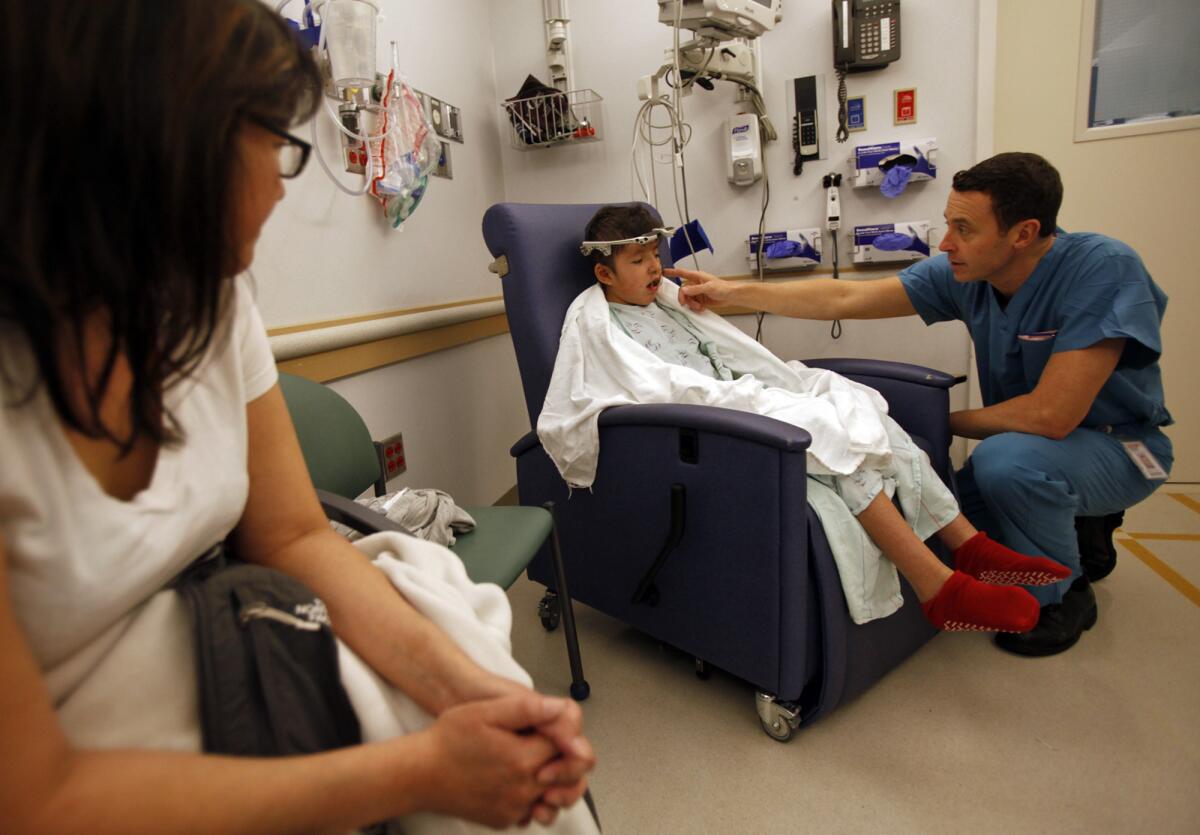With new plastic surgery technique, boy’s face is removed, realigned

SEATTLE — What is it about a face that causes people to accept it as “normal”? Or to be disturbed, if somehow it is not?
For those who suffer from facial deformities, this is more than an idle question.
As it turns out, psychologists have come to understand precisely what ratios between eyes, nose and cheeks are subconsciously seen by others as acceptable, and how people react when a face somehow doesn’t fit into the mathematical norm.
“If I’m talking to you, I’ll just sort of naturally figure out if the balance of your face makes sense to me as a human being,” said Richard Hopper, head of the craniofacial surgery center at Seattle Children’s Hospital. “If the balance is off, if your eyes are too far apart, if the ratios are wrong, it’ll just keep nagging at you. A human mind can’t get over it.”
Who gets a job and who doesn’t can be affected by the ratios of the face, studies have shown. So can which kids make friends easily in preschool, which kids develop self-esteem and which don’t.
“If you get a child and you show them a picture of their hand, they’ll say, ‘That’s a hand.’ ” Hopper said. “If you show them a picture of a foot, they’ll say, ‘That’s a foot.’ But if you show them a picture of their face, they’ll say, ‘That’s me.’ ”
A story in Thursday’s Los Angeles Times chronicles Hopper’s work with James Weatherwax, an 11-year-old Alaska boy who suffers from Apert syndrome, a rare genetic mutation that prematurely fuses the bones of the skull (and also of the fingers and toes). The top of the boy’s head ballooned like a mushroom; the planes of his face went every which way.
Until now, modern surgical techniques for correcting Apert deformities handled the most important things — making room for the growing brain, opening up breathing passages. But they left the front of the face compressed, with a concave appearance. Apert faces just don’t look like other people’s faces.
Hopper and his team have figured out a way to fix that. Through a new technique known as “Lefort II midface distraction and simultaneous zygomatic repositioning,” chronicled in this month’s issue of Plastic and Reconstructive Surgery, Hopper managed to realign the entire front of Weatherwax’s face.
It involved a nearly daylong, intricate procedure in which the entire front of the face was cut off, rechiseled and put back into place.
“The face is peeled forward and his scalp is brought down over his face to his chin,” Hopper said, describing the procedure as if he were telling someone how to repair a car.
“That gives us access to the eyeball area, the cheekbones, the forehead, the upper part of the eye sockets,” he said. “The bone is completely removed, and on a side table, like a carpentry shop, we use saws and chisels and plates and screws and re-create the eye sockets and the lower forehead in a new shape.”
The entire triangular section of reconfigured bone is reattached to the skull in a new position, farther forward. New bone eventually grows on the side of the skull -- usually at the rate of a millimeter or two a day -- to make the new dimensions permanent.
The main reason for such surgeries is to open up airways so that Apert patients don’t feel, as Weatherwax has for so many years, that they have a tennis ball in the back of their throats. But the cosmetic benefits are almost as important.
“We take that for granted, somebody saying, ‘You look great today,’” Hopper said. “An Apert patient doesn’t get that. I’m hoping that James has that experience.”
Return to Science Now.






